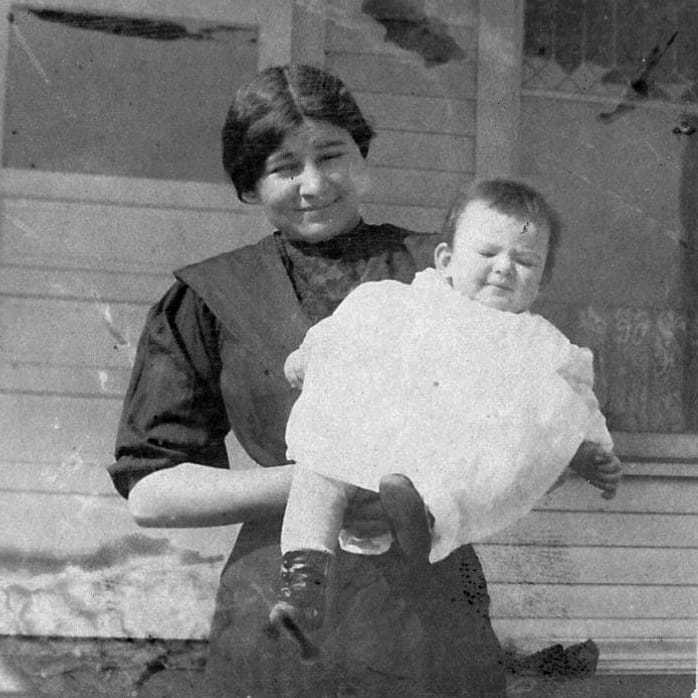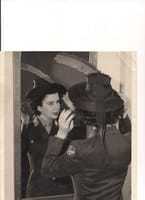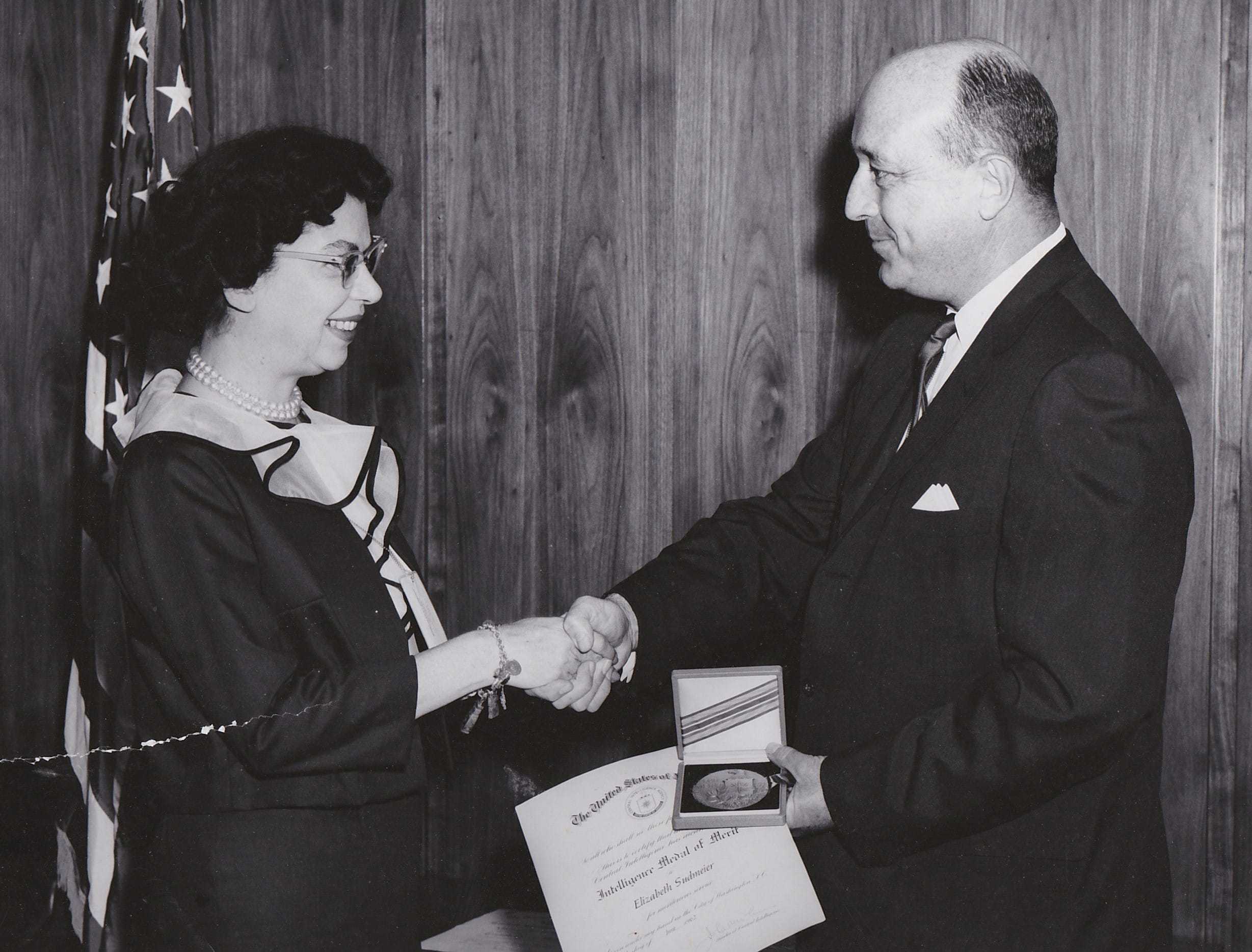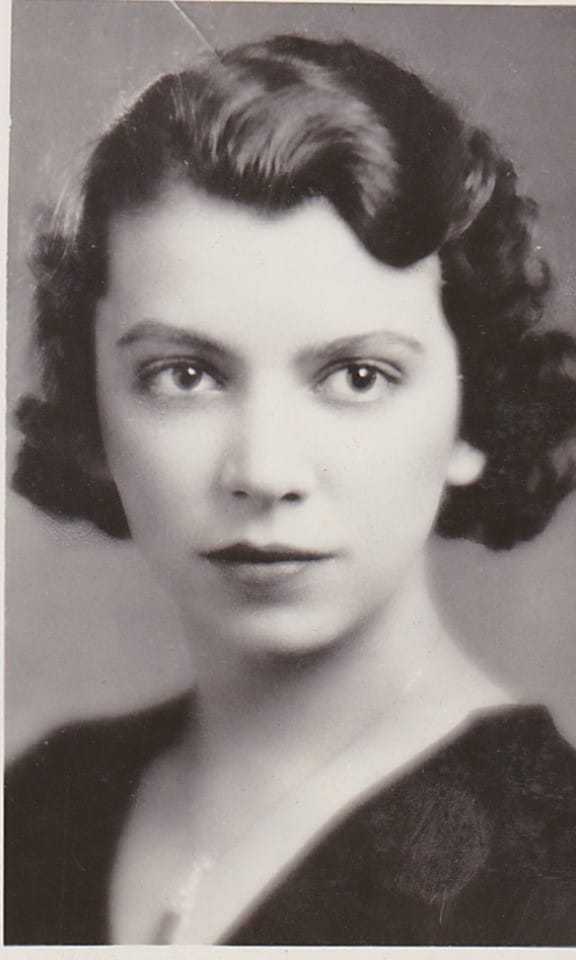
Elizabeth Sudmeier was a pioneer in breaking down gender barriers at the CIA. As a founding member of the Agency, Elizabeth, like many women at that time, began her career as a typist. Yet, despite the resistance of Agency senior managers and supervisors, Elizabeth did what few woman were able to do. She worked as a field operations officer, serving overseas in places like the Middle East and South Asia for almost nine years, and helped usher in a new era of woman’s equality at the Agency.
Because of her historic contributions, Elizabeth was selected as one of the 2013 CIA Trailblazers, those “whose leadership, achievements, and dedication to mission had a significant and lasting impact on the Agency’s history.”
From Small Town to the Agency:
Elizabeth was born on May 12, 1912 in the small railroad town of Timber Lake, South Dakota. In close proximity to the Sioux Nation, her father traded with the Sioux and eventually became fluent in the Sioux language. For much of her *****hood Elizabeth was raised by a Sioux nanny. After high school, Elizabeth studied English Literature at The College of St. Catherine in St. Paul, Minnesota, earning a B.A. in 1933.

Elizabeth with her Sioux nanny, 1912.
She returned to South Dakota and began a brief career as a high school English teacher, where she oversaw student plays and the school newspaper. She left teaching in 1935 to become a secretary at a bank in St. Paul. During World War II she joined the US Army Women’s Army Auxiliary Corps (WAAC) with a rank of corporal. Assignments to Edmonton, Canada, and Fairbanks, Alaska, qualified her for the World War II Asiatic Pacific Campaign Medal and the Overseas Service Bar.
In March 1947, Elizabeth joined the CIA’s predecessor, the Central Intelligence Group (CIG), as a shorthand stenographer in the Office of Reports and Estimates. When CIA replaced the CIG in September 1947, Elizabeth became one of the Agency’s charter members. In October 1951 she transferred to the clandestine service.
Breaking Gender Barriers:
Elizabeth began her operations career in an era when few females served in operations and senior positions. When CIA created the Junior Officer Trainee (JOT) program in 1950 to build a cadre of ***** intelligence officers, the classes had very few females. One woman in the second JOT class later recalled that CIA was a men’s organization, with “women just along for the ride as far as management was concerned.”
The best window into the dynamics of gender in the early years of Elizabeth’s career is a 1953 report on the role of women at CIA (dubbed the “Petticoat Panel”) and the reaction it elicited from Agency managers. DCI Allen W. Dulles commissioned the report after being challenged by several new female employees who wanted to know why women were hired at lower grades than men and whether Dulles thought women were sufficiently recognized at the Agency.
A panel of female officers conducted the study. Many of the interviewees expressed their frank views on women in the Agency. The interviewees’ quotes included the following: “Women are not qualified to perform in those positions which they do not now occupy,” one said. “Women can’t work under the pressures of urgency and special considerations inherent in much of the Agency’s work,” said another. “Men dislike working under the supervision of women and are reluctant to accept them on an equal basis as professional associates.”

The final study put numbers behind what was visible every day: that the discrepancy between males and females at the Agency was vast. For example, the median grade for women at CIA was four grades below that of men. Only 19% of the women in the Agency were in grades higher than GS-7 while 69% of the men were. (The scale has inflated since then; a common grade for a new clandestine service employee in the early 1950s was a GS-5, and a case officer could expect to be a GS-7 after a couple of years.) The panel’s report concluded with several recommendations, such as a DCI statement to the workforce that the contributions of women should be maximized, that the Agency should encourage women to pursue careers in fields such as operations and analysis, and that Agency management should consider women for executive roles.
Agency leaders were dismissive. CIA inspector general Lyman Kirkpatrick responded that “No supervisor in this Agency in his right mind is going to take a good stenographer or a darned good competent file clerk and say, well, just because you got your BA …we are going to make a Case Officer or Researcher out of you.” Richard Helms, at the time the Chief of Operations in the Directorate of Plans (forerunner of the NCS and DO) and later a Director of Central Intelligence, commented that “it is just nonsense for these gals to come in here and think the Government is going to fall apart because their brains aren’t going to be used to the maximum.” Agency executives also discussed the likelihood that women would get married and exit the workforce, which as they saw it, made training *****er women a waste of time.
Elizabeth Proves Herself in Overseas Ops:
Upon completing operations training, Elizabeth began a new career track as a reports officer. In the field, reports officers managed the Stations’ Foreign Intelligence production and ensured that the Station was collecting against the most priority targets and meeting the needs of intelligence consumers back home. Reports officers who were operationally certified could handle agents, though as indicated by her supervisor on the eve of one of her assignments, operational activity, in the Middle East at least, tended to be the realm of men only.
As a result of her operational performance during her first major field assignment, Elizabeth made a resounding impression on CIA’s Near East (NE) Division, proving that a female officer could operate securely in an intense counterintelligence environment. Whereas the original plan had not involved her running local agents due to her gender, she not only handled agents but also did so in the face of more aggressive scrutiny of US officials than had prevailed before.
During one of her Middle East assignments, Elizabeth recruited an agent who had access to details on a variety of Soviet military hardware, including the MiG-19 fighter, the MiG-21 fighter, the SA2 missile, and many other systems. Details on this equipment were a high priority for the US Intelligence Community.
At her instruction, they would plan to “accidentally” encounter each other at local coffeehouses or as the source was exiting a movie theater. They would chat for several minutes and then move on.

In the life of the case, this agent would supply dozens of volumes of technical manuals on the Soviet equipment. In a typical operation, Elizabeth would meet the agent briefly, with the agent handing Elizabeth an object such as a roll of material. She would take it back to a secure location, where it would be copied. Elizabeth would then return the manual to the agent later that night.
Technical analysts in the US Intelligence Community found these manuals invaluable, and they occasionally led to reassessments of the capabilities of the Soviet systems.
Her Chief of Station (COS) had this to say: “Apprehension by the security authorities of the agent or of [Elizabeth] while engaged in this operation would probably mean death for the agent and grave consequences for [Elizabeth]. [Elizabeth] has been fully aware of the risks involved, but in the best tradition of [CIA] has never hesitated to accept these risks because of the importance of the material involved.
For the recruitment, her Station chief nominated Elizabeth for the Intelligence Medal of Merit (IMM). A retired Agency officer later recalled the controversy that ensued within NE Division over whether it was appropriate for a female who was not listed as an operations officer to win such a distinction for an operational act. Colleagues in NE who knew Elizabeth, most importantly her COS, successfully lobbied over the objections of several opponents in the Division. In August 1962, Elizabeth received the medal.
Despite Successes, Hurdles Remain:
Despite this success, Elizabeth was passed over for promotion to GS-13–common mid-career grade–for several years. The record does not contain written deliberations or feedback on why Elizabeth was not promoted for several years despite being eligible, but the language of her supervisors when arguing for her promotion makes clear that gender was an issue. One plainly asked the promotion panel not to let her gender prevent her from making that grade. A former NE Division officer who knew Elizabeth told the Center for the Study of Intelligence, “I can tell you outright that hers was a monumental struggle as NE Division was dead set against the idea and concept of a female ops officer.” She was finally promoted to GS-13 in 1966, having been a GS-12 for eight years.

Elizabeth’s operational success, recognition with the IMM, and promotion to GS-13 abetted another process underway at the time: the professionalization of the reports officer. Reports officers had substantive expertise in the countries for which they were responsible and served as the bridge between the consumer and field collector. They sent intelligence requirements to the field, evaluated the reports at Headquarters, and decided which intelligence reports would be disseminated to the community. At the time, few reports were disseminated directly from the field; most were sent to the reports desk for review, and as much as 20 percent of the reporting was culled from operational traffic, making the Headquarters reports officer especially critical.
Despite this role, reports was considered a trivial task. In 1960, a CIA review said that “There is a general feeling that handling reports is women’s work, and that the reports slots are logical tracks for promoting bright girls from the secretarial ranks.” It also said that, “there is a general feeling that the preparation of reports is a tedious and incidental chore, to be avoided like the plague by any promising and ambitious ***** man who wants to get ahead in operations.”
Though it didn’t come quickly, appreciation for the contribution of reports officers grew over time, in large part due to the impact of individual officers such as Elizabeth. That an officer had achieved such an operational success in the 1960s was one of the early demonstrations that, like gender, an officer’s designated career track did not determine operational success. Today, the position of reports officer, known more formally as a Collection Management Officer (CMO) is one of the two core collector career tracks in CIA’s Directorate of Operations (formally the National Clandestine Service).
Honoring Elizabeth’s Historic Contributions:
Elizabeth took mandatory retirement on May 12, 1972, at age sixty. In retirement she remained loyal to the Agency, and during the tumultuous mid-1970s when the Agency was subject to regular attacks the media, Elizabeth would cancel her subscription to newspapers and magazines if she believed they went too far in maligning the Agency. (She would then renew, only to un-subscribe again; she did this several times with the Washington Post.) She continued living in the Washington, DC, area, quiet about the details of her Agency career, until her death in April 1989.
Elizabeth never held a high-profile position of leadership, and four decades after her retirement she was all but unknown to the CIA workforce. Based on a nomination from the CIA Center for the Study of Intelligence, however, she was selected as one of the 2013 CIA Trailblazers.

A CIA officer who had known Elizabeth in the 1950s recalled her impact first-hand: “She was a real pistol…. The fact that she accomplished so much is incredible given the general antagonism of NE officers to women functioning as ops officers. This was a general view among [Directorate of Operations] male ops officers…. Liz certainly paved the way for female ops officers.”
CIA has always had talented people filling a variety of roles. The Agency continues to find new ways to maximize the skills and attributes of its officers and from within the US population at large. Appreciation of diversity at the Agency was not immediate and took some time before its broader acceptance today. Elizabeth’s case did not remove all barriers faced by female employees, just as no one person or event in our country’s civil rights saga ended all forms of discrimination nationally. But each person and each episode have had an impact and a lasting legacy even if the particulars have faded into history. Elizabeth Sudmeier’s quiet yet extraordinary work—one of the unheralded intelligence triumphs of the Cold War—helped change the culture at CIA to one that better harnesses the talents of its workforce, and it is to the Agency’s benefit that the details of her contribution have been rediscovered.

